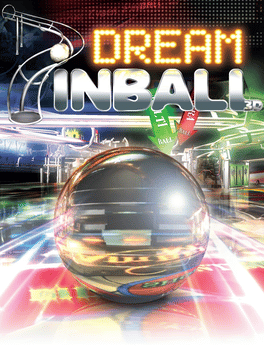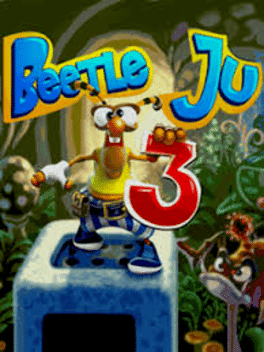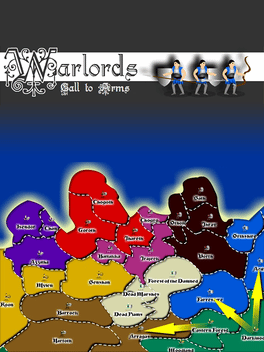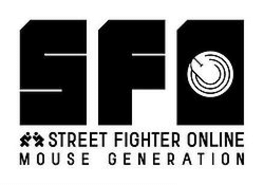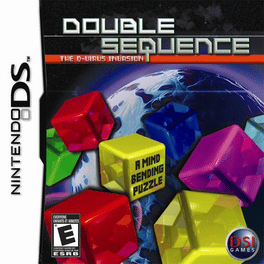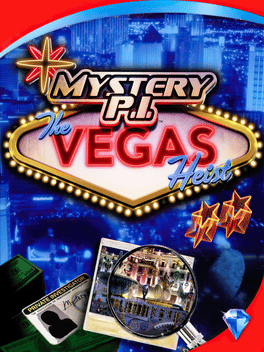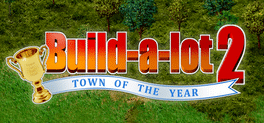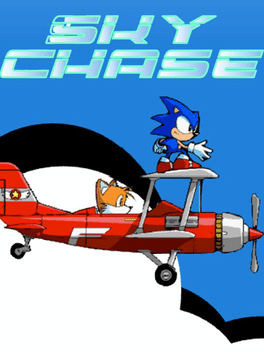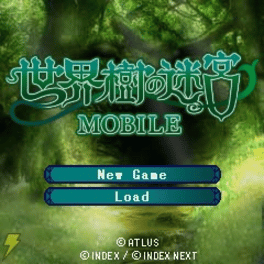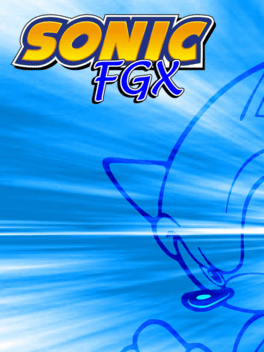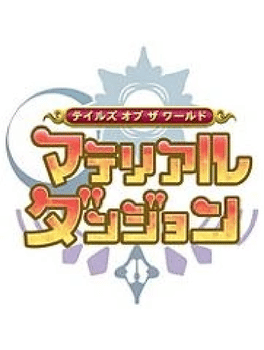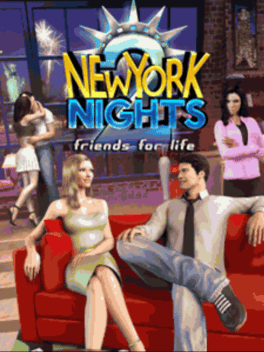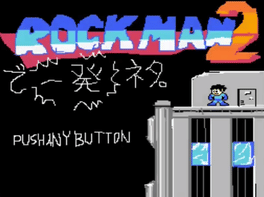New Games - Page 9992
-
Dinosaur King: Fierce Battle! Zanjark!
2008
The fourth entry of the arcade machine series, where you fight with dinosaurs with a rock, paper, scissors enhanced system. This version brings a totally new story, where apparently Alpha gang stop being a menace to the dinosaurs, but now, the D-Team has to face a new enemy, Zanjark, space pirates who want universal dominance. This entry has the habitual new dinosaurs and moves introduction, but also, added the first power up/gimmick to the series, Armored dinosaur, Dinotector for the heroes, and Jark armors for the enemies. -
Dream Pinball 3D
2008
Dream Pinball 3D
2008
Dream Pinball 3D is a port of the PC pinball game Dream Pinball 3D. It includes all six tables: Knight Tournament, Monsters, Dino Wars, Aquatic, Spinning Rotors and Amber Moon. As well as the original score based mode from the main game, this port also includes a Mission Mode exclusive to the Nintendo DS. -
Beetle Ju 3
2008
Beetle Ju 3
2008
Compared to Beetle Ju & Beetle Ju 2 your goal is to retrieve all children from the all 100 levels in this game. -
Warlords: Call to Arms
2008
Warlords: Call to Arms is a fast-paced strategy side-scroller. Choose your race and command your army through 25 epic battles to conquer the land. Upgrade and buy extra unit types for your army between levels. Upwards of 50 animated soldiers can be fighting on screen at once! -
Street Fighter Online: Mouse Generation
2008
The game uses a PC mouse for combat, and the characters are customizable to some degree. The player chooses between action-figure versions of Street Fighter characters, and licensed characters based on novels, manga and anime. -
Double Sequence: The Q-Virus Invasion
2008
A stream of deadly Q-Viruses is taking over the universe by exterminating any sign of life that gets in the way! There's only one way to save civilization-crack the Q-Virus' DNA Code and obliterate them all. In "Double Sequence," players shift and slide blocks of the random genetic code in order to match like colors. This will not be easy-the patterns become more difficult as the Q-Virus ravaged more planets. -
Mystery PI: The Vegas Heist
2008
star 6Find over 2300 cleverly hidden objects Investigate 25 intriguing Vegas locations to locate the stolen money Two fun game modes: 'Solve the Vegas Heist' and 'Unlimited Seek & Find' Play 5 unique mini-games: Word Search, Tile Rotation, Tile Swap, Jigsaw and a unique crime solving puzzle -
Build-A-Lot 2: Town of the Year
2008
It’s time to get busy again building, buying and selling houses in Build-a-lot 2: Town of the Year! There are new towns to explore, new Mayors to meet and lots of money to be made as you cast your vote for the ‘Town of the Year’. Use your keen eye to pick the right locations to build parks and shops. Pick your paint colors, upgrades and landscaping to create the ultimate curb appeal and earn outstanding profits. How about a latte from the new coffee shop? Some new flower boxes from the garden center? It’s all waiting for you in Build-a-lot 2 ...welcome to the neighborhood. -
Auditorium
2008
Auditorium
2008
star 6.7In Auditorium, the player uses various game mechanics to bend streams of light particles to fill audio containers. As each of the audio containers is filled, an audio channel introducing an instrument or sound is added to the game's music. In most levels, the audio containers are a variety of colors which the particle stream must match in order to fill it. The player changes the color of the stream by manipulating it over fixed areas of the level which dye the particles as they pass through them. The goal of each level is to direct and split the stream in such a way that each audio container is filled simultaneously, revealing the level's full soundtrack. -
Sonic Sky Chase Zone
2008
Sonic Sky Chase Zone
2008
This is a Flash version of part of the Sky Chase Zone from the classic 1992 game "Sonic the Hedgehog 2". Your mission is to help Sonic to kill 25 Valkyn badniks in each level in order to progress to the next one, and finally to take on Dr. Robotnik in an aerial battle. Use the Cursor keys (Arrow keys) to fly Tails's Tornado airplane towards the enemies and then use the Space Bar to make Sonic spin-jump off the wing to attack. Be VERY careful though, because in this game the controls are reversed and are the same as in a real airplane!! You have to press the Down Arrow key to go UP, and the Up Arrow key to go DOWN! There are twice as many badniks to kill in each level as in the previous one, and each time you defeat Dr. Robotnik in Level 4 the game returns to Level 1 and the badniks speed up. Because the game becomes very difficult after a while, there is an invincibility cheat just in case you want one - press Up, Down, Left, Right + "A" in the title screen to activate it - Sonic will turn yellow and will be in -
Etrian Odyssey Mobile
2008
The first ever Etrian Odyssey game was released exclusively for I-appli devices in Japan. As of today, the game is considered lost media. -
Sudoku
2008
Sudoku
2008
You won’t be looking for a paper puzzle ever again! With 4 difficulty levels, intuitive interface, and all the functions right at your fingertips, this Sudoku app is sure to be your favorite. Interrupted? Exit Sudoku, and the puzzle is saved exactly as you see it! -
Sonic FGX
2008
Sonic FGX
2008
Its a Sonic Fan game created by Gamer Dee. Is a Side-Scroller Platformer based on the Sonic Advance series -
Tales of the World: Material Dungeon
2008
Tales of the World: Material Dungeon is a spin-off game released on January 31, 2008 in Japan only for mobile cellphones. Twins Lene and Rio pursue a variety of quests in order to recover four lost elemental roots. The materials they receive at the end of each quest can be used to make costumes. When a character puts those on, they gain the abilities of the costume's related class. -
Indestructotank Anniversary Edition
2008
A remake of IndestructoTank, with some elements from Indestruc2Tank. Strap on your IndestructoBelts - it's gonna be a bumpy ride! -
Vacation Cove
2008
Vacation Cove
2008
8 new Caribbean levels (1 secret)! Powered by an awesome soundtrack contributing a lot to the "vacation feeling", you will pay a visit to lagoons, a Mayan temple, a fun park and many more places where shotguns are needed instead of sunglasses! Even features a mini hub to which you return to for about 50% of the episode. -
Zero no Tsukaima: Maigo no Period to Ikusen no Symphony
2008
The story is a separate continuation from the anime and follows the adventures of Saito and Louise when they are tasked with checking out a library after reports of ghosts inhabiting it arise. During the search Louise goes missing, and when they find her Saito and crew discover Louise has lost her memory. The librarian tells them they will need to go into the various books in the library to recover Louise's memory. Saito and friend's adventure into the world of the books then begins. Notable changes from the other entries in the series include the "tsundere meter" being reworked from a notched bar to a gradient circle gauge, while also lacking the turn based combat sections from the first entry. -
Unknown Soldier: Mokuba no Houkou
2008
Unknown Soldier, like its predecessor, is a full-3D third person shooter set during World War II, with a simple mission-based structure. -
New York Nights 2: Friends For Life
2008
New York Nights 2: Friends For Life is an interaction-based action-adventure video game developed by Gameloft New York and published by Gameloft. It was released for button-operated mobile phones and Android and iOS devices in 2008. It is the sequel to New York Nights: Success in the City. -
Rockman 2 de Ippatsu Neta
2008
A Mega Man 2 fangame in which you fight all 8 robot masters simultaneously.


